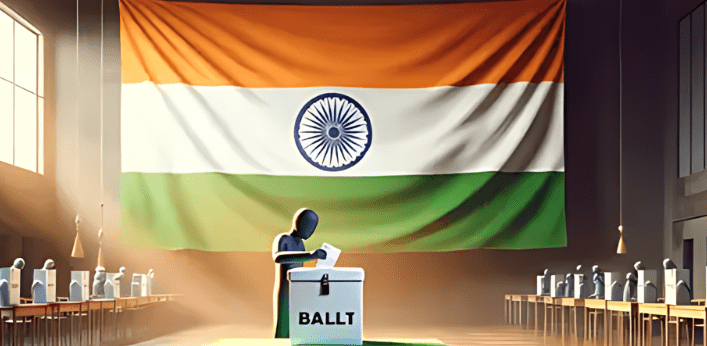The immense machinery of India’s vast parliamentary elections advances into its second phase on April 26, drawing particular attention to the southern states of Kerala and Karnataka.
In this round, notable contenders emerge, including a former leader of India’s primary opposition party who has yet to secure a victory in a general election, a former prominent figure in the United Nations and accomplished author, and a former Bollywood luminary seeking reelection for the third time, albeit facing disappointment from constituents due to her limited presence on the ground.
India’s general elections for the 543 seats in the lower house of parliament, the Lok Sabha, commenced on April 19. The outcome of this monumental democratic process, the largest ever witnessed, is slated to be revealed on June 4.
With a staggering 969 million registered voters, exceeding the combined populations of the United States, the European Union, and Russia, India boasts the world’s largest electorate.
In addition to numerous contenders at both regional and national levels, the electoral landscape is dominated by two major alliances: the National Democratic Alliance (NDA), spearheaded by Prime Minister Narendra Modi’s Bharatiya Janata Party (BJP), and the Indian National Developmental Inclusive Alliance (INDIA), a coalition of 28 parties led by the primary opposition Indian National Congress, united in their goal to displace the BJP from power.
In phase 2 of the elections, voters from 88 constituencies across 13 states and union territories will cast their ballots:
- Kerala: All 20 seats from this southern state.
- Rajasthan: 13 out of 25 seats from the western state.
- Karnataka: 14 out of 28 seats from the southern state.
- Uttar Pradesh: Eight out of 80 seats from the northern state.
- Madhya Pradesh: Six out of 29 seats from the central state.
- Assam: Five out of 14 seats from the eastern state.
- Chhattisgarh: Three out of 11 seats from the central state.
- Bihar: Five out of 40 seats from the eastern state.
- Maharashtra: Eight out of 48 seats from the western state.
- West Bengal: Three out of 42 seats from the eastern state.
- Tripura: One out of two seats from the northeastern state.
- Jammu and Kashmir: One out of five seats from the union territory.
- Manipur: Parts of one seat from the northeastern state, which also voted in the first phase, will vote on April 26.
Some key constituencies and their contests include:
- Wayanad, Kerala: Rahul Gandhi, a prominent opposition leader, faces Annie Raja of the Communist Party of India, striving to retain his 2019 victory. Despite Gandhi’s lineage, his Congress party faces stiff opposition from the BJP.
- Thiruvananthapuram, Kerala: Shashi Tharoor, a senior Congress member, seeks reelection against the BJP’s Rajeev Chandrasekhar. Despite Kerala’s diverse demographics, the BJP struggles to secure substantial support.
- Mandya, Karnataka: The BJP aims for a breakthrough in this traditionally challenging seat, while the Congress hopes to capitalize on discontent against the ruling government.
- Mathura, Uttar Pradesh: Bollywood actor Hema Malini of the BJP faces the Congress’s Mukesh Dhangar in a stronghold seat. Malini’s absenteeism is a point of contention.
- Gautam Budh Nagar, Uttar Pradesh: Former minister Mahesh Sharma of the BJP seeks reelection amidst criticism of the party’s stance on minority issues, particularly in the aftermath of the Mohammed Akhlaq lynching incident.
news ref by aljazeera

